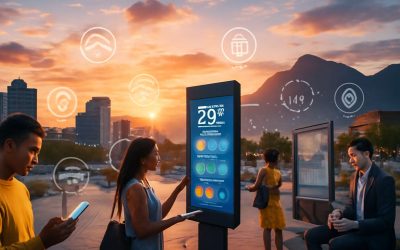
Digital technologies are transforming almost every aspect of human existence. Besides being a convenient method of communication, digital technology also helps companies to produce more efficiently, and to automate some of the most tedious processes. In addition, digital technologies allow businesses to market their products to the masses on a variety of online platforms.
While digital technology is being used by a wide array of businesses and organizations, it is important to understand its potential for your business. It can automate and streamline many of your logistical processes, and it can make your company more productive, more flexible, and more profitable. By implementing new technologies, you can improve the customer experience, increase your employee satisfaction, and even create a culture of change.
In a cyber-physical world, where people are more connected than ever before, it’s important to develop strong connections between your information and infrastructure. Using big data analytics, you can discover trends, uncover hidden correlations, and identify patterns. This is the basis for analyzing and interpreting complex data and understanding the way that your customers think.
The digital revolution began around the early 1980s, when enhanced fiber optics made it possible to develop digital communication networks. Eventually, the internet became the primary distribution channel for many businesses. As a result, businesses adopted digital technology to grow their businesses.
Digital technology is a fusion of computer systems, technical equipment, and resources. It enables businesses to introduce new products and services on various digital platforms. It also helps to streamline invoicing, inventory updates, and picking. Moreover, digital technologies help to protect your information and make it accessible and usable.
Digital technologies are now becoming more widespread across nearly all industries, including the financial and health sectors. A wide variety of technological improvements have helped to simplify life for students, teachers, and others. They include artificial intelligence, robotic machines, and multi-functional devices.
For example, smartphones and tablets have become more powerful and convenient. They are lightweight and easy to carry. During the past two decades, digital technology has expanded the consumer’s options for buying and selling goods and services, especially in the gaming and eCommerce industries.
Digital technology has also been used for automated payment processes, such as credit card payments and PayPal. Customers can check their credit score and pay bills using these services. Also, the growing popularity of mobile phones has led to the development of phone applications that expand the consumer’s options for shopping.
Another example of a digital technology is an augmented reality device, which enhances the user’s experience by presenting real-world information. Most music listeners now purchase tracks in compressed audio formats, and they stream audio from the web.
Other examples of digital technology are automated systems, such as the Nest thermostat. These systems are a major contributor to the increasing availability of multi-functional devices. Furthermore, artificial intelligence, which simulates human intelligence, is the foundation of robotic process automation, computer vision, and other high-tech functions.
Finally, digital technology is being applied to a range of industries, including aerospace, automotive, defense, financial services, healthcare, manufacturing, retail, and many others. Digital innovations have made the job of educators easier, and students can now access reading materials and presentations from anywhere in the world. Similarly, robotics are becoming increasingly sophisticated, and companies are researching nanorobots for medical procedures.



0 Comments